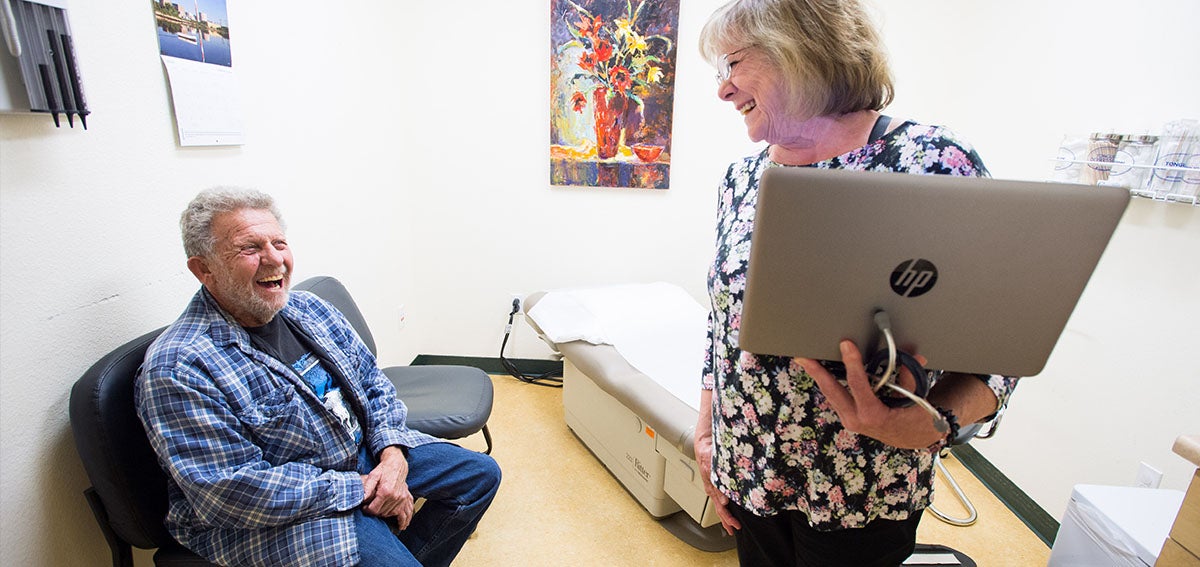

Recent polling shows that health care continues to be top of mind for most Americans. A survey conducted by Politico and the Harvard T.H. Chan School of Public Health (PDF) found that the vast majority of Americans rank lowering health care costs and prescription drug prices as their top domestic priorities for President Donald Trump and Congress. And, in a recent Gallup poll, Americans ranked health care as an extremely important issue, slightly edging out terrorism/national security, gun policy, and education.
While Americans support steps to strengthen the health care safety net, the Trump administration continues taking steps to weaken it. The president recently released a budget proposal with deep cuts to Medicaid, the joint state-federal program for people who can’t afford health care. Medicaid is also the nation’s largest public insurance program.
“Taken together with Medicaid changes recommended elsewhere in the budget, the proposal would strip about $1 trillion out of Medicaid and the Affordable Care Act’s premium subsidies, the two pillars of the law’s expansion of insurance coverage,” Margot Sanger-Katz reported in the New York Times.
In January, the Trump administration released guidance to allow states to voluntarily convert a portion of their federal Medicaid funding into block grants. By applying for a waiver to accept block grants, states would exchange open-ended federal matching funds for flexibility in setting Medicaid eligibility requirements. The administration calls that an “opportunity,” but critics consider it a threat to the most vulnerable people.
The budget proposal in its current form is unlikely to be approved by Congress, and California is not expected to participate in the block grant program. But given the continued threats, this seems like an appropriate time to review the role of Medi-Cal, California’s Medicaid program, and its important role in the state’s health care safety net.
Medi-Cal Covers Many Working Californians
Medi-Cal is the primary source of health insurance for Californians with low incomes, covering over 40% of the state’s children, half of the people with disabilities, more than one million seniors, and one in five workers. Medi-Cal insures more than 13 million people, or nearly one in three Californians.
In this high-cost state, millions of workers in low-wage jobs struggle to make ends meet. A new statewide poll conducted by CHCF and SSRS found that Californians are more worried about certain medical expenses than they are about housing. Medi-Cal helps fill the gaps for families who are working hard but unable to afford health insurance. Of the nearly five million Medi-Cal members between age 18 and 64 without disabilities, 84% were in families with at least one working member, and 62% worked themselves. Among adult Medi-Cal members who were not employed, many faced major obstacles to joining the workforce: 36% were caring for a family member, 28% were ill or had a disability, and 18% were attending school.
Medi-Cal is particularly important to workers in industries that are less likely to offer employer-sponsored insurance. In 2015, more than one-third of California workers in industries like agriculture, restaurants, and administrative and building services were enrolled in Medi-Cal, according to the UC Berkeley Center for Labor Research and Education.
Bipartisan Support for Medi-Cal
Californians are acutely aware of the importance of Medi-Cal. For the second year in a row, CHCF’s California Health Policy Survey found strong bipartisan support for the program. Ninety-one percent of Californians say the program is important to the state, and 61% say it is important for themselves and their families.
When stratifying by political party identification, 98% of Democrats, 89% of independents, and 81% of Republicans say Medi-Cal is important to the state. Sixty-five percent of Democrats, 58% of independents, and 47% of Republicans say it is important for themselves and their families.
Evolution of Medi-Cal
California Governor Gavin Newsom’s proposed budget for 2020–21 includes $965 million for Medi-Cal Healthier California for All, a multiyear initiative that aims to implement broad delivery system, program, and payment reforms across the Medi-Cal program.
As Chris Perrone, CHCF’s director of improving access, said in a recent Q&A, the initiative is “a major step toward creating a Medi-Cal payment system that achieves what Californians want: high-quality, accessible care that leads to better health for millions of children, seniors, and working families that are low income.”
Authors & Contributors


Jessica Brandi Lifland
Jessica Brandi Lifland is a freelance photographer, instructor of journalism at City College of San Francisco, and mother. Her work with publications and nonprofits such as Operation Smile, Tostan, and the California Health Care Foundation has taken her all over the world, including West Africa, the Middle East, Kosovo, Burma, Haiti, and South America.
For two decades she has been photographing the National Cowboy Poetry Gathering and has been working on a long-term project documenting the lives of the cowboy poets of the American West in affiliation with the Western Folklife Center. She plans to make her project into a book.



